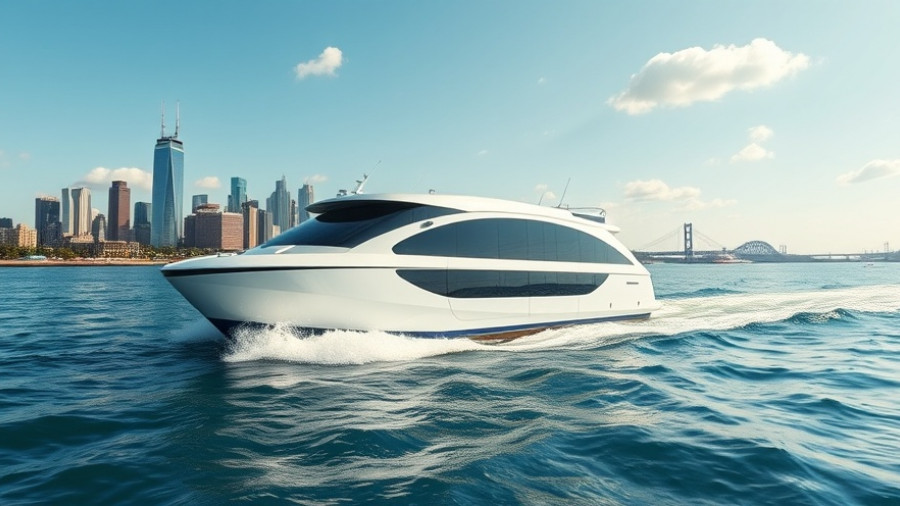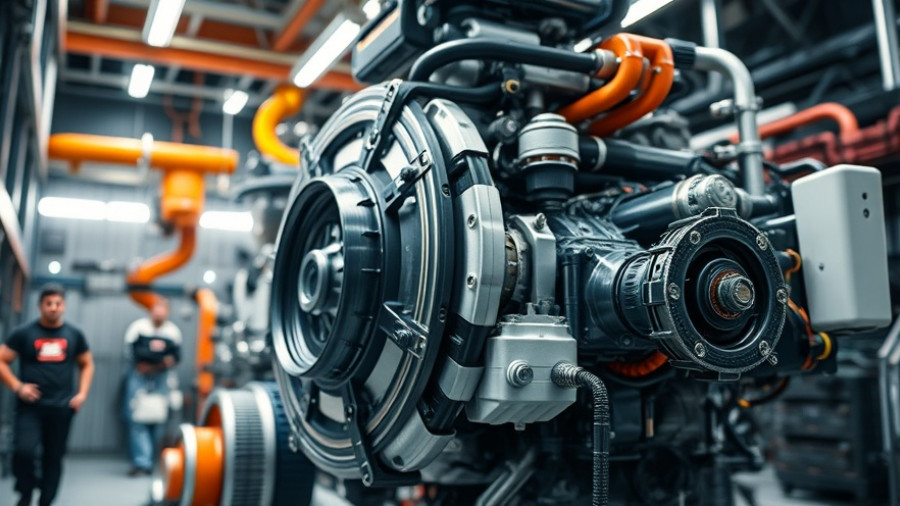
The Next Generation of Naval Warfare: Understanding the DDG(X)
As the U.S. Navy shifts its focus toward modernizing its fleet, the upcoming DDG(X) program signifies a monumental leap in naval warfare capabilities. Designed to succeed the aging Ticonderoga-class cruisers and Arleigh Burke-class destroyers, the DDG(X) aims to integrate advanced systems that require an unprecedented level of power generation. Set to kick off construction in 2032, this next-generation large surface combatant is not just another ship; it embodies the future of naval combat. With plans to incorporate an Integrated Power System (IPS), the Navy aims for the DDG(X) to produce over 75 megawatts of power, ensuring it can support advanced sensors and high-energy combat systems.
Power and Efficiency: The FM 175D Diesel Engine
Enter Fairbanks Morse Defense (FMD), which has secured a contract to supply the FM 175D engine for the DDG(X) program. This engine boasts an impressive power output ranging from 1,740 to 4,400 kilowatts and is designed for high efficiency, operating optimally between 1,800 and 2,000 RPM. FMD's COO, Mike Clark, emphasized the engine's role in meeting modern surface combatants' energy demands.
"The selection of the FM 175D for this significant land-based test highlights the superior power density needed on modern ships," he stated. The engine's ability to produce up to 3.8 MW of power makes it stand out as one of the best in class for power density, allowing it to minimize life cycle costs while maximizing operational efficiency.
Historical Context: Evolution of Naval Power Systems
The integration of advanced propulsion systems into naval vessels is not a new phenomenon. However, the transition to high-speed diesel engines, such as the FM 175D, signifies a critical evolution of naval power systems. This trend began when the Navy recognized the need for not just power, but also energy efficiency, particularly in combat operations. Previous generations relied heavily on conventional propulsion systems that often fell short in power output and efficiency. As naval warfare tactics evolved, so too did the technologies that support them. The introduction of engines like the FM 175D reflects a broader push towards not only enhancing the fleet's capabilities but also ensuring environmental compliance and fuel economy in modern maritime operations.
The Global Landscape of Naval Defense
With growing international tensions, the design and deployment of advanced warships like the DDG(X) become increasingly relevant. Nations across the globe are investing in next-generation naval capabilities to maintain or enhance their tactical advantages. The competition in naval defense is fierce, not only among traditional naval powers but also emerging economies looking to modernize their fleets. The effectiveness of the FM 175D engine can resonate beyond U.S. waters, positioning Fairbanks Morse Defense as not just a local player but a significant contributor to global maritime defense solutions, thus showcasing the strength and potential of U.S. engineering in the defense sector.
The Future of the DDG(X) Program: Opportunities and Challenges
The path to realizing the DDG(X) program is fraught with challenges, yet laden with opportunities. As construction gears up, the Navy must ensure that technological advancements keep pace with operational needs. One potential challenge is the integration of advanced systems that require complex energy management solutions. To address this, collaboration between defense contractors, engineers, and the military is essential, ensuring that designs remain innovative while adhering to budgetary constraints and timelines. The successful incorporation of the FM 175D engine marks an opportunity for future-proofing Navy operations and could set a precedent for subsequent military projects.
Conclusion: A Call to Stay Engaged with Naval Innovations
The DDG(X) program and Fairbanks Morse Defense's FM 175D engine represent pivotal developments in naval technology. As we watch these advancements unfold, it becomes imperative for stakeholders—including military personnel, engineers, and civilian enthusiasts—to stay informed and engaged. The outcomes of such cutting-edge initiatives will shape not only the future of naval warfare but also the landscape of global defense.
 Add Row
Add Row  Add
Add 




Write A Comment